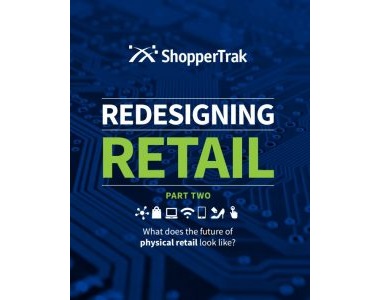Over half (55%) of shoppers know exactly what item they want to buy by the time they arrive in a shop, with many put off by staff that lack product knowledge, due the rise in online research, according to a new report.
The report, from ShopperTrak, found that connected consumers have become increasingly used to moving fluidly between both online and offline channels when making a purchase.
The study, called ‘Redesigning Retail: What Does The Future Of Physical Retail Look Like?’ revealed that over a third of UK consumers (38%) still shop in-store just as often as they did a year ago.
Here are some of the key findings from the report:
· Over a third of UK consumers (38%) still shop in-store just as often as they did a year ago
· A quarter of UK customers (25%) feel that better staff would improve the store experience
· 15% would abandon a sale if the store associate had poor product knowledge
And this elevated level of product knowledge is impacting consumers’ expectations of the bricks-and-mortar experience and, more specifically, the role of the store associate.
The report’s findings include:
· A quarter of UK customers (25%) feel that better staff would improve the store experience, with a further 27% wanting sales associates to be equipped with tablet devices to bring digital capabilities to the shop floor, meaning they can offer ecommerce style services, such as access to online reviews and conduct real-time stock checks
· While price (32%) and long queues (31%) proved the most common reasons for consumers to abandon a purchase in-store, almost a fifth (18%) would give up on an item if it took too long for a sales person to assist them.
· Similarly, 15% would abandon a sale if the store associate had poor product knowledge, demonstrating omnichannel shoppers’ increasing expectations that staff should deliver ‘added value’ or recommendations over and above what they themselves can find.
· Accustomed to receiving high levels of personalisation in ecommerce channels, omnichannel shoppers increasingly expect retail staff to deliver this same level of personal service in the store; a fifth (21%) say having more staff on hand to provide one-to-one assistance would enhance bricks-and-mortar experiences. This highlights the need for retailers not only to deliver tailored one-to-one encounters but also the increasing need to understand peaks and troughs in shopper traffic to closely map and optimise the staff:customer ratio.
Steve Richardson, UK & MEA Director at ShopperTrak, commented “While a high proportion of planned shopping trips enable retail organisations to plan operational resources with some level of reassurance, the challenge is to meet shoppers’ needs once they arrive in the store. Bricks-and-mortar’s biggest challenge is not just to use technology to bring more data-driven insights into the physical retail environment, but to combine statistical knowledge with human warmth to make stores truly unique, fulfilling touchpoints.”
For more information on how retailers can future proof bricks-and-mortar’s role within their omnichannel strategies, download the report in full by visiting:
http://uk.shoppertrak.com/resources/downloads/redesigning-retail-part-two/
